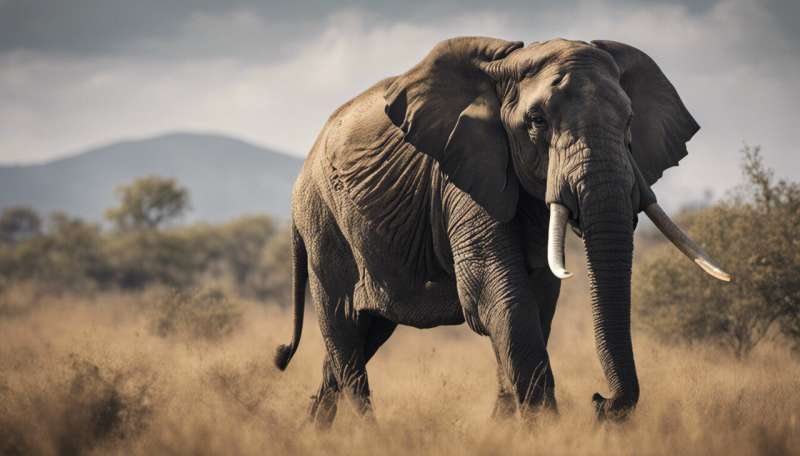This article has been reviewed according to Science X's editorial process and policies. Editors have highlighted the following attributes while ensuring the content's credibility:
fact-checked
peer-reviewed publication
trusted source
proofread
Study finds endangered elephants regularly leaving protected area

For the sake of shielding vulnerable and endangered wildlife from the existential risks posed by people, some governments and agencies have established so-called protected areas that are designed to be free of human encroachment and development.
Though much thinking has gone into which areas are best suited to protect at-risk species, much less has accounted for how well a protected area might accommodate the particular behaviors of the species within it. Overlooking certain behaviors might, in turn, mean that an area fails to serve its purpose as well as expected or hoped. One type of behavior receiving some recent attention? The way a species uses, or doesn't use, the space afforded it.
Husker doctoral candidate Anastasia Madsen and colleagues from three continents analyzed space use among Asian elephants, an endangered species on which others rely to move seeds, soil and valuable nutrients around an ecosystem. Given the differences in sexes—the mostly solitary males alternate between seeking food and competing for mates, whereas adult females form social groups that regularly disperse and reassemble—the team wondered whether those differences might shape their respective space use.
Over nine years, the researchers observed 516 adult Asian elephants in Udawalawe National Park, a protected area of Sri Lanka. The team concluded that most adult males and half of females—nearly 75% of the tracked elephants overall—may not have qualified as long-term residents of the area, often disappearing for substantial stretches of time. The findings are published in the journal Scientific Reports.
While space use seemed to vary a fair amount even within the sexes, Madsen and her colleagues did find some signatures. Just 11% of mature males used the protected area exclusively for finding a mate—those entering their sexual primes tended to leave the area—with 44% foraging it for food and 45% seeking both sustenance and partners. Adult females, meanwhile, congregated in communities ranging from two to 22. Though the team found some evidence that social relationships influenced space use among females, the relationship was weaker than expected, suggesting that individuals dispersed with different members of their communities across the nine-year span.
The fact that substantial proportions of the Asian elephants spent substantial proportions of their time outside Udawalawe National Park underscores the importance of factoring in adjacent territory when undertaking conservation efforts, the team said. With space use varying so much between individuals of the same sex and even the same community, researchers might glean additional insights from tracking single elephants both inside and outside protected areas.
More information: Anastasia E. Madsen et al, Strategies of protected area use by Asian elephants in relation to motivational state and social affiliations, Scientific Reports (2022). DOI: 10.1038/s41598-022-22989-1
Journal information: Scientific Reports
Provided by University of Nebraska-Lincoln



















